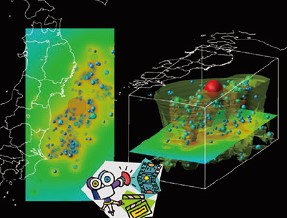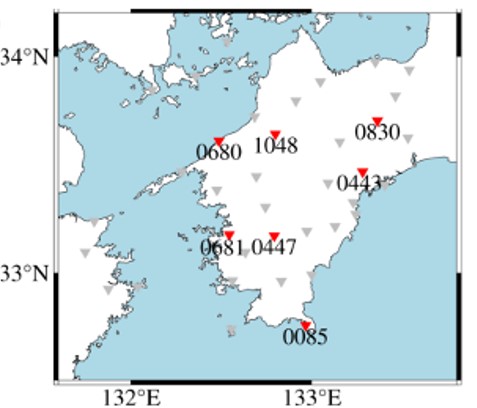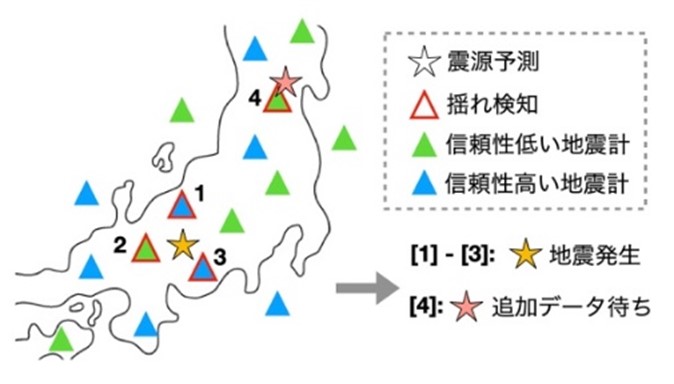
● Probability forecasting of seismicity and evaluation of forecasting performance
● Hierarchical Bayesian space-time modelling
● Anomaly detection based statistical models
● Statistical inference of point process models
● Seismic network optimization
● Probabilistic earthquake early warning
■ Seismic probability forecasting
 Real-time probability aftershock forecasts, generated immediately after the main shock, using the ETAS model.
Real-time probability aftershock forecasts, generated immediately after the main shock, using the ETAS model.Underground faults and stress fields that act on faults can not be observed directly. Forecasting earthquakes is challenging due to the complexity of the heterogeneity of different tectonic environments. However, earthquake occurrences are not completely random, and forecasting their probability is still possible. The space-time ETAS model, which forecasts the possibility of future earthquakes based on past seismicity, has been recognized by researchers worldwide as a standard statistical model for seismicity. This model is important in mitigating earthquake hazards, especially for an earthquake-prone country like Japan. We are developing a practical forecasting system, based on the ETAS model, to use in mitigating earthquake hazards.
■ Seismic network optimization
 Selection of observation stationsfor detecting slow slip events
Selection of observation stationsfor detecting slow slip eventsJapan and the world have very large seismic observation networks. On the other hand, in order to make full use of the enormous volume of data acquired from these networks, it is necessary to optimize seismic observation networks (e.g., selection of stations and integration of data from networks). Therefore, we are working on developing the selection methods of observation stations for inverse analysis of crustal deformation and for upgrading of earthquake early warning systems, and are also working on developing data integration methods for the development of a high-precision magnitude catalog.
■ Probabilistic earthquake early warning
 Source parameter prediction based on
uncertainty of the observed data
Source parameter prediction based on
uncertainty of the observed dataEarthquake Early Warning (EEW) is a system that rapidly predicts information on the epicenter based on seismic network data within a few seconds after the occurrence of an earthquake, and promptly issues a warning when a strong shaking is expected. This is a challenging problem because of the limitation of available data right after an earthquake, and there are many uncertain factors such as the unknown ground structure. It is necessary to improve the accuracy of EEW by evaluating the uncertainty of prediction using Bayesian machine learning and extracting information that accounts for various sources of uncertainties. In addition, development of decision-making algorithms for timely emergency response based on the uncertain EEW predictions is another important research direction in this field.
